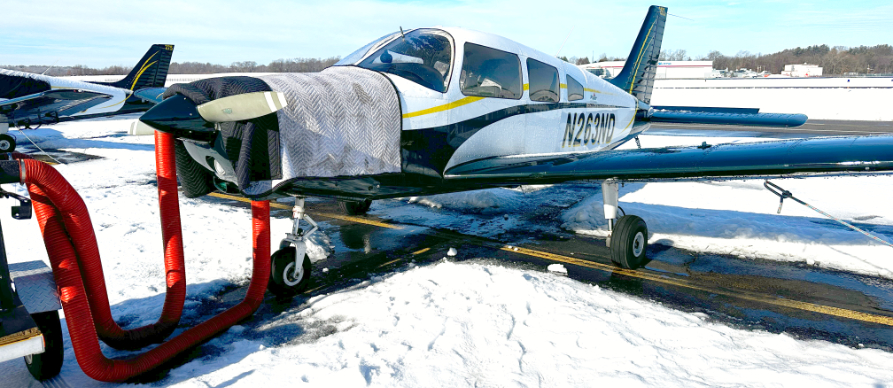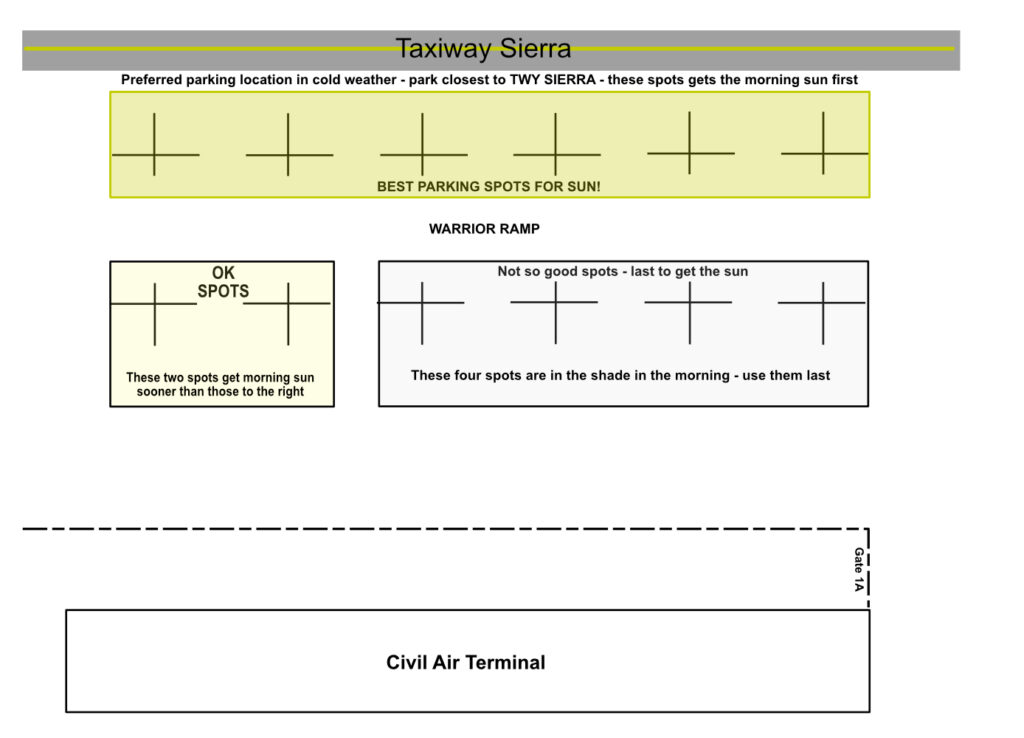
Flying in New England during the winter months presents some unique challenges and considerations due to the frequent cold weather conditions.
Operating procedures are therefore different for East Coast Aero Club training flights when the weather conditions are colder (below 40°F) and / or there is snow / ice present on the airport non-movement and movement areas.
ECAC Winter Pre-heat Procedures
Preheating of aircraft prior to starting the engine is required under 40°F – if in doubt, ASK!
Dispatch Phone: 781-274-6322
You must call or text the following information to the preheat phone number 781-354-0077 on the day of your flight:
- Your name
- Aircraft
- Engine start time (The time you plan to turn the key to start, NOT the time your reservations starts.)
Aircraft will not be dispatched when:
- Temperatures are at or below 10°F
- Within 2 hours of 10°F
- ECAC do not use de-icing chemicals on ECAC aircraft, therefore the sun must melt off any contamination. If there is ice or frost on your car there is likely the same on the aircraft.
- You must call or text the following information to the preheat phone number on the day of your flight:
Students and instructors are encouraged to wait until after their flight to go over ground materials so they may start their preflight ASAP.
Please make every effort to keep the office up to date if you are delayed from your original start time.
Ice & Frost
On days when frost has formed on the aircraft, it is acceptable to remove the frost only with the approved brush found in the baggage compartment.
If you are concerned that you can’t remove it all, call the office and ask for help.
All the frost, ice, or other contaminants must be cleared from the entire surface of the aircraft except the frost that forms under the fuel tanks.
§ 91.527 Operating in icing conditions.
(a) No pilot may take off an airplane that has frost, ice, or snow adhering to any propeller, windshield, stabilizing or control surface; to a powerplant installation; or to an airspeed, altimeter, rate of climb, or flight attitude instrument system or wing, except that takeoffs may be made with frost under the wing in the area of the fuel tanks if authorized by the FAA.”
Although the FAA outlines those things of the aircraft that must be free of ice/contaminants, you should remove ALL of it. Frost has an effect on the aircraft center of gravity (CG) and weight / takeoff distances. If there are any contaminants on the spine-that area behind the cockpit to the empennage it must be removed.
- Do not bang on or hit aircraft to break off ice.
- Use the snow brush that is in all baggage compartments using a wiping motion only and moving aircraft into sun is best.
- Never scrape the frost with an item such as a credit card or any other scraping device especially on windows.
Cross-country Flying
- When flying to another airport, do not shut down for extended periods of time without arranging pre-heat services beforehand. Wind-chill can cool an engine down in as little as 15 minutes. If no preheat services are available, do not plan to shut down.
- Please include in the comments section of the reservation your intended Hobbs time, destination, and affirm you have arranged pre-heat services.
- Dispatchers will not allow you to depart if you have not arranged pre-heat services at your destination
Winter Parking
- When parking in the winter months – pay attention to where you park your aircraft when returning from a flight. This will help with melting ice and frost from the aircraft. (over night / next morning)
- Scraping ice and frost from aircraft surfaces is not permitted
Moving aircraft on slippery surfaces
- Care must be taken when moving aircraft on slippery surfaces as there are many potential way to injure yourself, others, and damage the aircraft, vehicles, and other property.

Taxiing on slippery surfaces
- Taxiing on slippery taxiways or runways at excessive speed or with strong crosswinds may cause the airplane to skid. (and crash)
- Use smaller nose-wheel steering and rudder inputs.
- Limit thrust to the minimum required.
- Limit excessive breaking action
- Only use enough speed to safely move you forward
- Slow down and take care in turns not to skid off the taxiway
- Stay away from visible icy patches
- Break check – use minimum power.